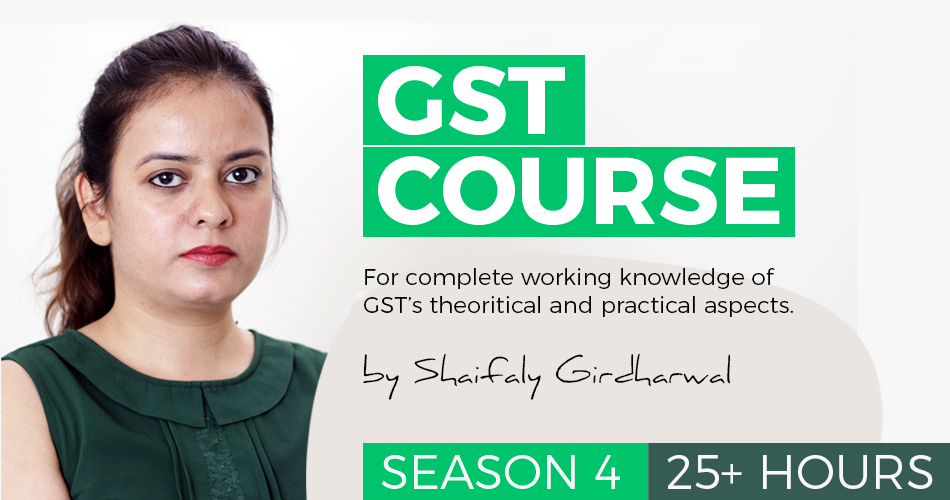Income Tax Search and Seizure: Seizure of undisclosed jewellery and its assessment thereupon- Legal Treatise
Table of Contents
Income Tax Search and Seizure: Seizure of undisclosed jewellery and its assessment thereupon- Legal Treatise
Introduction:
The Central Board of Direct Taxes vide Instruction no. 1916 dated 11-05-1994, clarified that no seizure should be made by the Search Party of the Jewellery and Ornaments found during the course of search proceedings under Section 132 of the Income Tax Act,1961, where the same have been duly declared in the Wealthtax Returns filed by the taxpayer or where such ornaments are within the prescribed limits of 100, 250 or 500 grams as stated in the said instruction. The aforesaid instruction is reproduced herein under:-
“Guidelines for the seizure of jewellery and ornaments in course of a search
Instances of seizure of jewellery of small quantity in course of operations under section 132 have come to the notice of the Board. The question of a common approach to situations where search parties come across items of jewellery, has been examined by the Board and the following guidelines are issued for strict compliance.
(i) In the case of a wealth-tax assessee, gold jewellery and ornaments found in excess of the gross weight declared in the wealth-tax return only need be seized.
(ii) In the case of a person not assessed to wealth-tax gold jewellery and ornaments to the extent of 500 gms. per married lady, 250 gms. per unmarried lady and 100 gms per male member of the family need not be seized.
(iii) The authorised officer may, having regard to the status of the family, and the custom and practices of the community to which the family belongs and other circumstances of the case, decide to exclude a larger quantity of jewellery and ornaments from seizure. This should be reported to the Director of Income-tax/Commissioner authorising the search at the time of furnishing the search report.
(iv) In all cases, a detailed inventory of the jewellery and ornaments found must be prepared to be used for assessment purposes. These guidelines may please be brought to the notice of the officers in your region.
Instruction: No. 1916, dated 11-5-1994.”
Even where no seizure is made during the Search, following the spirit of the aforesaid instructions of the CBDT, in several cases, Assessing Officers, while finalizing the post-search assessments, make additions treating such Jewellery and Ornaments as an undisclosed investment, on the ground that the taxpayer does not possess adequate evidence for acquisition of the same.
The issue for Consideration:
Instruction No. 1916 (F.No. 286/63/93-IT(INV.II), dated 11-5- 1994, issued by the Central Board of Direct Taxes (‘CBDT’) directs the income tax authorities, conducting a search, to not seize jewellery and ornaments found during the course of a search of varying quantities specified in the instructions, depending upon the marital status and the gender of a person searched. The guidelines are issued to address the instances of seizure of jewellery of small quantity in the course of search operations u/s. 132 that have been noticed by the CBDT. A common approach is suggested in situations where search parties come across items of jewellery for strict compliance by the authorities. The CBDT directed that in the case of a person not assessed to wealth-tax, gold jewellery and ornaments to the extent of 500 gms. per married lady, 250 gms. per unmarried lady and 100 gms. per male member of the family, need not be seized.
The High Courts, under the circumstances, relying on the above-referred instructions of the CBDT, has consistently held that the possession of the jewellery and ornaments to the extent of the quantities specified in the instruction is to be treated as reasonable and therefore explained and should not be the subject matter of additions in the assessment of the total income of a person.
In case of CIT v. Satya NarainPatni [2014], 46 taxmann 440 (Rajasthan) the Rajasthan High Court held that the CBDT had clearly provided that prescribed limit of jewellery will not be seized, it would mean that taxpayer, found with possession of such jewellery, will also not be questioned about its source and acquisition.
In case of CIT v. Ghanshyam Das Johri [2014], 41 taxmann 295 (Allahabad) the Allahabad High Court held that if one goes with CBDT’s Instruction No. 1916, dated 11-5- 1994 and ratio laid down in case of Smt. Pati Devi v. ITO [1999] 240 ITR 727 (Kar.) then a married lady of a reputed family is expected to own 500 gms of ornaments. Therefore, jewellery found in possession to that extent could not be treated as an undisclosed investment.
Read & Download the full Copy in pdf:
 CA Mohit Gupta
CA Mohit Gupta
Delhi, India
Mr. Mohit Gupta is a Fellow Member of the Institute of Chartered Accountants of India, a commerce graduate from prestigious Ramjas College, Delhi University, and alumni of St. Xavier’s School, New Delhi. He is practicing as a Chartered Accountant for more than 15 years and managing the Direct Tax Advisory and Litigation practice of M/s. Dhanesh Gupta & Co., Chartered Accountants, New Delhi a renowned Chartered Accountancy firm in the core domain of direct taxation established in 1978. He forte is handing Income Tax Search and Seizure matters, matters before the Income Tax Settlement Commission and other direct tax litigation matters. As of today, he has wide experience in handling Income Tax Search and Seizure Cases, representing matters before the Income Tax Settlement Commission, ITAT, and other appellate tribunals. He has been contributing articles in various professional magazines/journals and addressing various seminars on topics relating to Income Tax Search and Seizure, Income Tax Settlement Commission, and other allied tax matters. He has to his credit plethora of well-researched articles out of which many have appeared in leading journals. In Addition to the above, Mr. Mohit Gupta is a Special Auditor of the Income Tax Department and has carried out numerous Special Audits across the country on being appointed by the Income Tax Department which have plugged tax evasions, tax base erosion, and other tax manipulative practices and in turn, facilitated the Income Tax Department to collect huge tax revenues. Mr. Mohit Gupta has also been appointed as Special Auditor under other tax statutes and by other Investigation Agencies of the Government of India. Mr. Mohit Gupta, authored the periodical Newsletter on Income Tax Search and Seizure. The said newsletter contained well-researched write-ups/articles and judicial developments on the matters of Direct Taxation. The newsletter was circulated both electronically and otherwise. Recently, in the year 2016, Mr. Mohit Gupta has authored two comprehensive books on the Income Declaration Scheme’2016, titled as “Law Relating to Income Declaration Scheme’2016”. His books provided at one place the entire gamut of the Law relating the Income Declaration Scheme ‘2016 and set to rest all the queries that arose before, during, and after the course of making the declaration under the Income Declaration Scheme’2016. The books received an extremely overwhelming response from the readers including the proposed taxpayers, tax administration, tax professionals, corporate houses, and academicians. The said books were released by erstwhile Hon’ble Union Finance Minister, Shri. Arun Jaitley, Shri.Arjun Ram Meghwal, Minister of State for Finance and the Chairman of Central Board of Direct Taxes and many other dignitaries. Due to his continuous desire to always rise on the learning curve, he always has a quest and quenches to read more, learn more, and perform even more.








